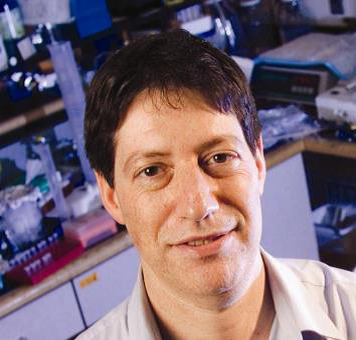Biopolymers and Bioplastics-2015 International Conference is an attempt to explore the various ways to utilize natural resources for betterment of the future, promising a better tomorrow for the progeny and a better vision for the springing research.
Biopolymers and Bioplastics-2015 is anticipated to be one the best scientific conferences in USA. The scientific sessions of this International Conference on Biopolymers and Bioplastics has been designed on vivacious topics such as Green Chemicals, Industrial Biotechnology, Micro and Nano blends based on natural polymers. Biopolymers and Bioplastics-2015 is consisting of well-organized scientific program and effervescent speeches by the expertise. OMICS Group scientific conferences always encourage the young researchers and students to share their excitement and enthusiasm with world class expertise.
Biopolymers are polymers produced by living organisms in other words, they are
polymeric biomolecules. Since they are polymers, biopolymers contain monomeric units that are covalently bonded to form
larger structures. Bioplastics are plastics derived from renewable biomass sources, such as
vegetable fats and oils, corn starch, pea starch or macrobiotic. Bioplastic can be made from
agricultural byproducts and also from used plastic bottles and other containers using microorganisms. Bioplastics can be composed of starches,
cellulose, biopolymers, and a variety of other materials. Industrial biotechnology is, as far as possible, based on various renewable raw materials, such as vegetable
oils and fatty acids. The challenge is to find suitable microorganisms and enzyme systems which effectively transform the raw materials into useable chemical substances. Global Green Chemicals Market to grow at a CAGR of 8.16 percent over the period 2013-2018, The leather chemicals market size in terms of value is projected to grow at a CAGR of 7.64% between 2014 and 2019 to reach$7,963.65 million by 2019.
A variety of natural, synthetic, and biosynthetic polymers are bio and environmentally degradable. A polymer based on a
C-C backbone tends to resist degradation, whereas heteroatom-containing polymer backbones confer biodegradability. The current review article focuses on Biodegradable polymers in
pharmaceutical drug delivery of therapeutic agents. Polymers have been used as a main tool to control the drug release rate from the formulations. During the past two decades significant advances have been made in the development of biodegradable polymeric materials for
biomedical applications. Biodegradable polymers market to grow at 13% through 2014 .Despite a poor global economy, the biodegradable polymers market grew in 2009 and will continue to expand at an average annual rate of 13% through 2014
Biocomposites is a composite material formed by a matrix and a reinforcement of natural fibers. Green composite are classified as a bio composite combined by
natural fibers with biodegradable resins. They are called green composites, mainly because of their degradable and sustainable properties, which can be easily disposed without harming the environment. Because of its durability,
green composites are mainly used to increase the life cycle of products with short life. Another class of Biocomposites is called hybrid bio composite which is based on different types of fibers into a single matrix. The fibers can be synthetic or natural, and can be randomly combined to generate the
hybrid composites. The global capacity for production of carbon fibres was 111, 785 tonnes in 2012. In 2016 it is set to reach 156,845 t and in 2020 set to reach 169,300t. In relation to these nominal capacities, actual production only represents a part, evaluated at 60% in 2012, 68% in 2016 and 72% in 2020. Demand was 47,220 t in 2012. It is set to reach 74,740t in 2016, and 102,460t in 2020. This over-capacity could lead to maintaining competitive prices. Carbon fibre matrix composites are made 72% from epoxy.
Polymer Nano composites (PNC) consist of a polymer or copolymer having
nanoparticles or Nano fillers dispersed in the polymer matrix. Plastic packaging for food and non-food applications is non-biodegradable, and also uses up valuable and scarce
non-renewable resources like petroleum. With the current focus on exploring alternatives to petroleum and emphasis on reduced environmental impact, research is increasingly being directed at development of biodegradable
food packaging from biopolymer-based materials. A biomaterial is any matter, surface, or construct that interacts with biological systems. As a science, biomaterials are about fifty years old. The study of biomaterials is called biomaterials science. It has experienced steady and strong growth over its history, with many companies investing large amounts of money into the development of new products. Biomaterials science encompasses elements of medicine, biology, chemistry, tissue engineering and materials science. Global biomaterial market over the forecast period of 2012-2017. The global market for biomaterials is estimated at $44.0 billion in 2012 and is poised to grow at a CAGR of 15% from 2012 to 2017 to reach $88.4 billion by 2017
Bioplastics are plastics derived from
renewable biomass sources, such as vegetable fats and oils, corn starch, pea starch or microbiota. Bioplastic can be made from
agricultural byproducts and also from used plastic bottles and other containers using microorganisms. Common plastics, such as fossil-fuel plastics ,are derived from petroleum or
natural gas. Production of such plastics tends to require more
fossil fuels and to produce more greenhouse gases than the production of biobased polymers. Some, but not all, bioplastics are designed to biodegrade. The use of bio-plastics could markedly increase as more durable versions are developed, and the cost to manufacture these bio-plastics continues to go fall. There is an increase of 20% (approx.) in the production of Bioplastics per year. Market of around 1.2 million tones in 2011 may see a five-fold increase in production volumes by 2016, to almost 6 million tones. By 2020 Bioplastics production could rise to 12 million tones.
Polyhydroxyalkanoates or
PHAs are linear polyesters produced in nature by bacterial fermentation of sugar or lipids. They are produced by the bacteria to store
carbon and energy. More than 150 different monomers can be combined within this family to give materials with extremely different properties. These plastics are biodegradable and are used in the production of bioplastics. In the industrial production of PHA, the
polyester is extracted and purified from the
bacteria by optimizing the conditions of microbial fermentation of
sugar or glucose.PHA market consumption will grow from an estimated 10,000 MT in 2013 to 34,000 MT by 2018, with a CAGR of 27.7% from 2013 to 2018
Cellulose is the most abundant
natural biopolymer on the earth, synthesized by plants, algae and also some species of bacteria. Unlike cellulose from plants,
bacterial cellulose (BC) is chemically pure and free of lignin and hemi-cellulose. BC has high crystallinity and a high degree of polymerization.
Plant-derived cellulose and BC have the same
chemical composition but different structures and physical properties. The BC network structure comprises cellulose Nano fibrils 3-8 nm in diameter, and the
crystalline regions are normal cellulose I. The specific properties such as the nonmetric structure, unique physical and mechanical properties together with its higher purity have lead to a great number of commercial products.
fiber market is projected to register a CAGR of 8.7% (between 2014 & 2019) with market size estimated at 1,983 KRT by 2019. Asia-Pacific region, with its reviving economy and rapidly expanding commercial and industrial base is projected to experience the highest growth in demand between 2014 and 2019
In search of new material solutions and keeping an eye on the goal of sustainable production and consumption, bioplastics have several (potential) advantages. The use of renewable resources to produce bioplastics is the key for increasing
resource efficiency, the resources can be cultivated on an (at least) annual basis, the principle of cascade use, as
biomass can first be used for materials and then for
energy generation, a reduction of the
carbon footprint and GHG emissions of some materials and products - saving fossil resources, and for substituting them step by step.
Plastic pollution involves the accumulation of plastic products in the environment that adversely
affects wildlife, wildlife habitat, or humans. Plastics that act as pollutants are categorized into
micro, meso, or macro debris, based on size. The prominence of plastic pollution is correlated with plastics being inexpensive and durable, which lends to high levels of plastics used by humans. However, it is
slow to degrade. Humans are also affected by plastic pollution, such as through the disruption of the
thyroid hormone axis or sex hormone levels. Plastic reduction efforts have occurred in some areas in attempts to reduce plastic consumption and pollution and promote plastic recycling.
Even though they still account for only a small share of the plastics market as a whole, bioplastics have become a real alternative to standard plastics manufactured from
petrochemical feedstock’s. The term 'bioplastics' is utilized for a whole range of various products with different properties and applications. In its recently published study, the market research institute .
Markets and Markets is a global market research and consulting company based in the U.S. We publish strategically analyzed market research reports and serve as a business intelligence partner to Fortune 500 companies across the world.Markets and Markets also provides
multi-client reports, company profiles, databases, and custom research services. Markets and Markets covers thirteen industry verticals, including advanced materials, automotive and transportation,
banking and financial services, biotechnology, chemicals, consumer goods, energy and power, food and beverages, industrial automation, medical devices, pharmaceuticals, semiconductor and electronics, and telecommunications and IT.We at Markets and Markets are inspired to help our clients grow by providing apt
business insight with our huge market intelligence repository.The global market for implantable biopolymers and Bioplastics was worth nearly $155.7 billion in 2014. This market is expected to grow at a compound annual growth rate (CAGR) of 7.2% between 2014 and 2019 resulting in $155.7 billion in 2014 and $200.5 billion global market in 2019.
International Conference and Exhibition on Biopolymers and Bioplastics
August 10-12, 2015 at San Francisco, USA .
Bioplastics are a form of plastics made entirely or almost entirely from renewable raw materials such as vegetable oil, corn starch, biomass whereas conventional plastics are made from petroleum ( oil or gas ). Bio-plastics can replace conventional plastics in the field of their applications also and can be used in different sectors such as food packaging, plastic plates, cups, cutlery, plastic storage bags, storage containers or other plastic or composite material items you are buying. Biopolymers and Bioplastics-2015 is an event delivering the concept of biobased world across the globe.In the present world where the use of conventional plastics, the consequences of plastic products use and the waste management of these products when they become waste, is a current and pressing issue. Concerns focus on the potential impact of conventional plastics they cause to the environment.
For more details please visit : http://biopolymers-bioplastics.conferenceseries.com/
Importance & Scope:
The history of Bioplastics is not a long one. They are beginning to emerge as a result of needing to be more responsible in taking care of the world we live in. Thus, the recent emergence of bio-based products rather than petroleum or natural gas based products.Various reasons are associated with the research and development of Biopolymers and Bioplastics. The use of bio-plastics could markedly increase as more durable versions are developed, and the cost to manufacture these bio-plastics continues to go fall. Bio-plastics can replace conventional plastics in the field of their applications also and can be used in different sectors such as food packaging, plastic plates, cups, cutlery, plastic storage bags,storage containers or other plastic or composite material items you are buying and therfore can help in making encironment sustainable.
Why San Francisco ?
The United States has consistently been the largest producer of plastic and the synthetic plastic market is engrained in the United States and world economy, but now the focus has been shifted to Bioplastics as plastics are having many adverse effects. The bioplastics market is miniscule in comparison to the plastics marketplace; however, bioplastics are gaining in capital and popularity . North America is the biggest market for biopolymers, consuming more than one-third of the total global demand for biopolymers.
Many institutions and departments in United States are encouraging the research for bioplastics. Departments such as Department of Defense (DOD), National Science Foundation (NSF), National Institute of Health (NIH), Department of Health and Human Services (DHHS) , Department of Energy (DOE), Northwestern University, University of Akron etc. are involved in the research for Biopolymers and Bioplastics.
Various companies like Dupont, Cereplast , Metabolix , Natureworks LLC etc. are now a part of USA and their product services are entirely based on Biodegradable Plastics i.e., Bioplastics.
Apart from Research and Industrial point of view, San Francisco is a beautiful city, having a density of about 17,867 people per square mile. It is the most densely settled large city (population greater than 200,000) in the state of California and the second-most densely populated major city in the United States after New York City. The city is also the financial and cultural hub of the larger San Jose-San Francisco-Oakland combined statistical area, with a population of 8.5 million.
San Francisco is a popular tourist destination, known for its cool summers, fog, steep rolling hills, eclectic mix of architecture, and landmarks including the Golden Gate Bridge, cable cars, the former prison on Alcatraz Island, and its Chinatown district. San Francisco is also the headquarters of five major banking institutions and various other companies such as the Gap Inc., Pacific Gas and Electric Company, Yelp, Pinterest, Twitter, Uber, Mozilla and Craigslist.
Why to attend???
Biopolymers and Bioplastics-2015 is an event delivering the concept of biobased world across the globe.In the present world where the use of conventional plastics, the consequences of plastic products use and the waste management of these products when they become waste, is a current and pressing issue. Concerns focus on the potential impact of conventional plastics they cause to the environment.
Conference Highlights:
· Green Chemicals : Biopolymers and Bioplastics
· Bioplastics Vs Conventional Plastics
· Future and Scope for Biopolymers and Bioplastics
· Biorefineries and Industrial Biotechnology
· Current Status on Biobased Materials and Biorefining
· Biomass in Industrial Development
· Case Studies: Different Uses of Bioplastics
· Ceramic Composites and Its Applications
· Biodegradation, Composting, Environmental Issues
Major Associations around the Globe :
· British Plastics Federation
· European Council for Plasticizers and Intermediates
· American Coatings Association
· American Chemical Society (Division of Polymer Chemistry)
· American Physical Society Division of Polymer Physics (APS DPOLY)
· Polymer Division of the Royal Australian Chemical Institute (RACI Polymer Division)
· Belgian Polymer Group (BPG)
· Brazilian Polymer Association
· European Polymer Federation
· BioEnvironmental Polymer Society
Target Audience:
Eminent Scientists/ Research Professors, Junior/Senior research fellows, Students, Directors of companies, Engineers, Members of different physics associations.
Top Universities in USA:
· University of Massachusetts Amherst
· Tufts University
· Northeastern University
· Stanford University
· Massachusetts Institute of Technology (MIT)
· Boston University
Bioplastics Market Analysis :
As there is need for eradication of plastics, there is increase in growth of industries for Biopolymers and Bioplastics. Biopolymers have found wide acceptance in various industries, on account of its distinguished environment friendly properties . Biopolymers are now a important part of every sector Food tech, nanotech, chemistry , medical , agriculture etc.
There is an increase of 20% (approx.) in the production of Bioplastics per year.Market of around 1.2 million tones in 2011 may see a five-fold increase in production volumes by 2016, to almost 6 million tones. By 2020 Bioplastics production could rise to 12 million tones.
For more details click here






















